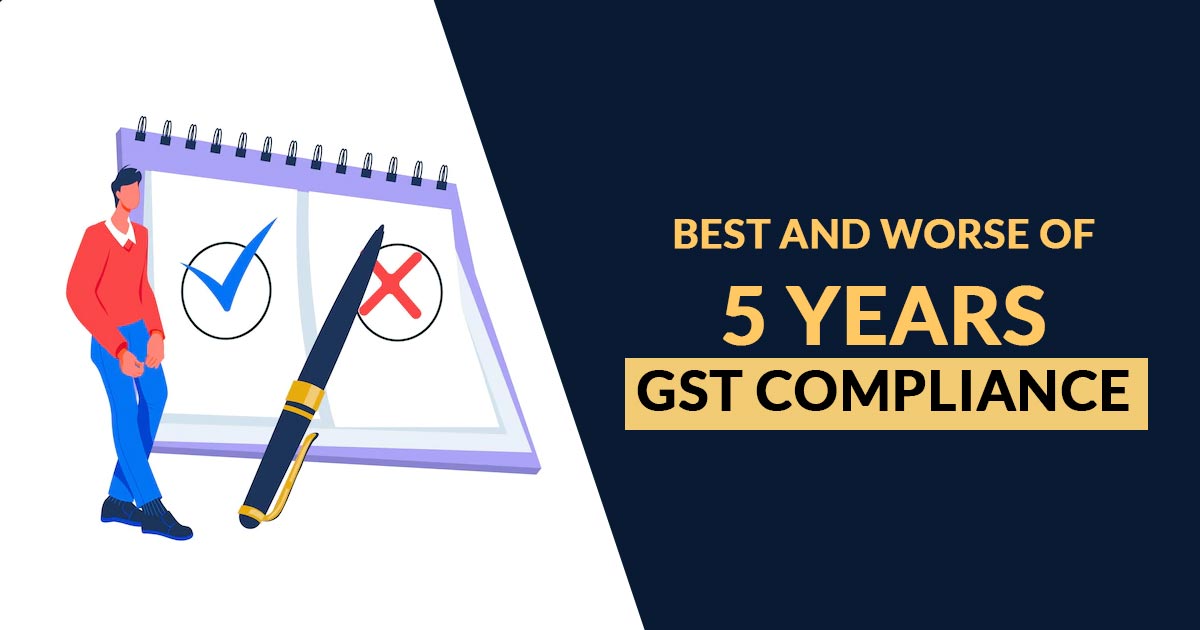
5 years before, on July 1, 2017, India had started the biggest amendment in its indirect tax system through the GST that would improve the complete indirect tax structure and lastly amend tax administration and compliance.
In the former 5 years, the GST implementation proves to be a ride like a roller coaster for the government and the industry. Some of the measures opted like e-invoicing, linking of inward and outward supply returns with the main GST returns have supported revenues of May 2022 to arrive INR 1.41 lakh cr mark. There shall be a major improvement in the tax base in India posing neatly 1.36 cr active GST enrollments dated 31st March 2022. Mentioned below is needed to see as per the GST Survey:
What Would be Effective
As the government has developed a unified tax on goods and services across the country, GST helps to make a simple structure and lower the tax compliance burden, making it easier for businesses.
Digitization in Compliance
It is a great cooming for the government as they started the automation of tax compliances which is working outstanding, precisely with respect to the erstwhile regime. The same would be performed as of the introduction of a one-stop-shop portal that is GSTN for all the compliances beneath GST. With the start of the e-invoicing beneath GST, it shall provide an outcome in a steep learning curve and the firms, particularly MSMEs enabled to capitalize on the same digital wave to quickly monitor the growth and makes the compliance stronger.
The Usage of the Technology Tools
The initial thinking was to make the core functionality required via the assessee and the officers. In lieu of that GSTNs sees to focus was to leveraging the technology and data present to revamp the rules, fetch the bogus activities and assist the policies. GSTN developed a Business Intelligence and Fraud Analytics (BIFA) unit in March 2019, that employed artificial intelligence and machine learning to make the BIFA tool that comes with a greater win in the former 5 years of GST. GSTN would provide several internal reports to the tax officers on the daily grounds in rectifying the daily tax administration.
Operation of the GST Council
The GST council is a real testament to the same financial federal and consensus-based structure. On the major legal issues the central, as well as the state governments, are working together. The GST council met has done 46 times in the former 5 years, and the subsequent meeting will be conducted soon.
Revamp Areas
Since the government has succeeded in developing a common tax for the exchange of goods and services all over the country, the system of GST seeks a basic structure and lesser compliance load, it is for business ease.
Require an Unlocking Credit
The goal behind the execution of the GST was to confirm the seamless tax credits all over the complete value chain with no losses. But the credit limitations brought forward through the erstwhile regime add to costs for the businesses, restricting precise working capital for the firms. The problem of inverted duty framework indeed continues to be an issue as a refund of input services is presently not permitted.
Issue Resolution
Much more would be achieved in terms of technology and compliance, the legal issue concerning GST is still at an initial stage. There shall be various instances of the varying judgments issued via regional advance ruling benches. These contrary judgments would provide the outcome of unneeded litigation for multiple businesses. Due to various issues that arise in setting up the GST Tribunal on the construct which results in various writ petitions at the high courts, increased cost, and pendency of the litigation towards the firms and the efforts engaged in that.
GST Tax Network Expanding
As petroleum is not counted under the GST, a bigger portion of the economy is still outside the tax net. The inclusion of petroleum products beneath the GST net will lessen the cost for companies as the taxes will become compatible.
Blockchain Technology Usage
GSTN had revamped the GST and on the other side, the blockchain technology would pose the capability to solve the issues and rectify the efficiency in GSTN. The non-reliable characteristics of the GST network for the small businesses at the other locations still carried on to be a challenge.
Revisions in the Ease of Doing the Business (EODB)
While technology beneath the GST would maintain the speed with the need of the government and the industry. The provision of compliance would still catch. For example, the GST law needs a set of the principal office in every state in which the supplies would be incurred. Apart from that, the deeming fiction provisions of the self-supply and the cross charge have expected to review. Specifically where it is revenue-neutral.
The government has focused to issue a notice, circulars, clarifications, and orders in the former 5 years of incorporation of GST. Also, the government focused on the stakeholders by facilitating the needed processes to prevent unnecessary litigation. In the subsequent 5 years, the positive amendment in assessee’s compliance along with the efforts of the government would ensure a more ease GST structure for all the stakeholders.
GST is standing at an important time. The states are anxious about the revenue inflows once the 5-year GST compensation window would lapse at the month-end. The GST collection must be higher and the recovery after the pandemic to carry on represent the signs of recovery if we continue to see the policy reforms. Last year Group of Ministers set up the rationalization of the tax rates and is now on its way.









